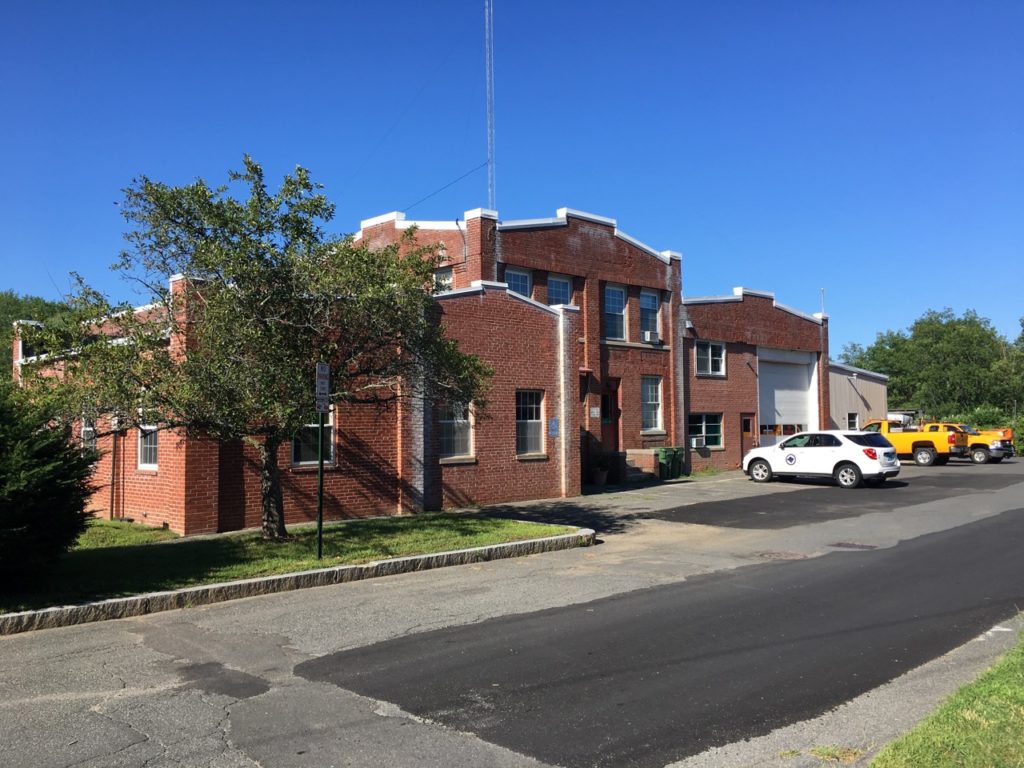Opinion: Let’s Learn From Our History And Avoid The Same Mistakes. DPW Facility Project Needs Diverse Perspectives At The Planning Table From The Beginning

The building housing the Amherst Department of Public Works is a 100 year old former trolly barn. Photo: Stephen Braun

Five years ago, the DPW/Fire Station Advisory Committee produced a plan for a public works facility with a ~$39 million price tag. This predated the Town’s Net-Zero bylaw so it did not consider net-zero construction. This committee, like previous ones that have produced controversial and expensive building plans, involved a group of people dreaming big and working in a silo. Now that the Town’s financial planners have capped the budget for this project at $20 million, about half of the original estimated cost, it must be completely re-envisioned.
Several questions will need to be answered along the way.
- What will need to be given up to get to a budget half the size of the last proposal? Is that even possible?
- How many of the roughly 100 vehicles the DPW currently owns are critical to maintain? If the Town reduces the fleet, what savings can it realize in facility construction and vehicle maintenance?
- What additional possibilities does that open up in terms of the site size needed for the project?
- What are the relative advantages and disadvantages of different locations, and consolidated versus dispersed facilities?
- What other plots of land could be offered or purchased for either the DPW or fire station?
- Given all we have learned during this past year of COVID-19, can some of the administrative functions of the DPW be conducted remotely?
- How will we approach net-zero building and minimization of energy consumption?
- Are there “model” DPW facility concepts that might sufficiently serve our needs and not require an expensive custom design (now estimated to cost almost $2 million)?
- How have comparable municipalities approached this issue with a similar fiscal and climate lens?
There are no doubt many other important questions that will need to be studied in depth.
As with other big projects, such as the elementary school and Jones library, this project will involve some potentially controversial decisions: site, size, scope, and renovation vs. new construction, among them. The time to hash out our differences should be during the process. That means people who disagree with each other should be included on the building committee, with seats at the table and equal footing, finding compromises and solutions together. This will be very different from the current practice where critical voices are relegated to 3-minute public comments or emails to Town Councilors after plans are set in stone.
This project must also be approached within the larger context of all the Town’s fiscal and facility needs. The narrative that there are four major capital projects is incorrect – there are many others. Crocker Farm is in need of significant repair and even expansion if it is to be the second of two elementary schools. Recommendations have been made to expand not only the hours and ages served but also the facilities for children 0-5 years of age. The middle school is in need of a new roof as well as safety and security improvements. The regional athletic track and fields require significant work. The Community Safety Working Group has recommended a BIPOC-led Youth Center and a multi-cultural Cultural Center. An Amherst Senior Center is another project that has been on hold for many years. The cost of the Centennial water treatment plant project has now risen to nearly $14 million. This partial list doesn’t even include the chronic backlog of repairs to the roads and sidewalks that the DPW itself maintains.
The concept of making clear-eyed distinctions between what we want and what we need, and building to what we can afford, is a new, but welcome, concept in Amherst planning. I confess that I am skeptical that the Town can provide sufficient detailed oversight of the planning and building of multiple simultaneous major projects – they will need all the help they can get. Let’s embrace and empower diverse viewpoints from the outset and produce a thoroughly vetted plan that doesn’t need a professional marketing firm to sell it to the community. It will be a better product and a unifying experience for a community deeply in need of a group win.

“This will be very different from the current practice where critical voices are relegated to 3-minute public comments or emails to Town Councilors after plans are set in stone.”
Once-upon-a-time in Amherst, the “squeaky wheel got the grease,” meaning that those who had good ideas, but who may have held contrarian views, were encouraged to join — and were even appointed to — Town committees.
Many thanks to Maria for writing this piece, and for serving on such a committee, even in the face of strong political headwinds: we shall overcome….
Rob Kusner
Thanks, Rob, for reading and commenting!
I want to clarify that the approach I laid out in this article (fiscal responsibility in the larger context of other capital needs, diverse viewpoints in decision-making capacities, and thorough and critical analysis of the details) is what I would like to see happen. To my knowledge, a committee has not yet been formed to address this building or the fire station and I don’t know what the process will actually look like.
Thanks for clarifying, Maria: I was referring to your service on the Fort River School Building Committee (I’ve forgotten its official name), which began some time ago, so maybe got the tense wrong and should have written “for having served on such a committee…”?
🙂
I strongly agree. If your suggestion had been our practice we would already have the school project completed and the library project under construction or finished. Instead of blaming each other for bad ideas and our inability to get projects approved and carried out, we might try listening with an open mind and working together. “That means people who disagree with each other should be included on the building committee, with seats at the table and equal footing”.